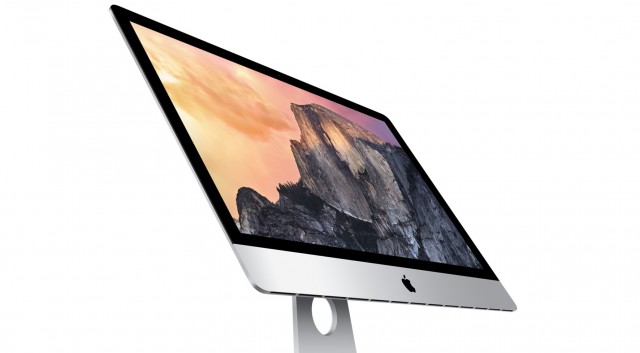PS4 leads Xbox One by at least 40% in global sales: Has Sony already won this console generation?

Both the Xbox One and PS4 will celebrate their first birthday next month, and as they head into their second holiday season and first full fourth-quarter availability, it’s interesting to take a look at how the two consoles have performed so far. All evidence suggests a significant advantage for the PlayStation 4, with a sales gap of at least 40% between the two systems, and possibly as large as 100% (2:1 in favor of the PS4).
That figure — a total sales gap of 40% between the two consoles — comes courtesy of Ars Technica, which performed some analysis based on reported sales of all consoles, previous sales figures, and remarks from executives from both Microsoft and Sony. The data, which tallies nicely with our own analysis of eight-gen console sales, represents the best-case scenario, using figures that maximize the Xbox One sales results and minimize the PS4′s performance. In reality, the PS4 could be running at 2:1 advantage or even more, and that’s before we head into the holiday season.
Is this a problem? In the short term, no. The fact is, the Xbox 360 had an equally large lead over the PS3 for years. Sony’s console wasn’t just plagued by its high price, it was stuck with minimal attach rates and, initially, lower-quality titles. It was difficult to optimize for the PS3′s Cell processor, and a number of its first games struggled to match the Xbox 360′s quality, much less surpass it. Throw in Sony’s epic screwup around rumble (and the unmourned, incredibly-annoying Sixaxis controller), the initially uncertain value of its Blu-ray player, and a host of hubris and jaw-dropping statements, and the Xbox 360 was the odds-on favorite to win the console generation. In reality, the two systems ended up at rough parity with the PS3 actually outselling the Xbox 360 over the very long term.
Much ink has been spilled on whether or not the Xbox One is less popular because it can’t handle quite as high a resolution, or because its scaler creates graphical oddities, or because it was priced too high with a bundled Kinect sensor. This last hits closest to the mark, but I think the fundamental problem Microsoft is still trying to crawl out from under with Xbox One is that the narrative has been dominated by two threads:
- What the Xbox One can or can’t do, relative to its own hardware restrictions, DRM policies, Kinect 2.0, many other facets of the console’s design.
- The fact that its graphics fidelity, load times, install times, etc. are often somewhat worse than the PS4.
This lack of focus, this inability to explain why anyone should buy a Xbox One in the first place, is most likely at the heart of the console’s sales problems. It wasn’t for lack of trying, but Microsoft was forced to deconstruct every single reason it tried to build into the Xbox One as a point of differentiation. Kinect? Killed. Always-on? Turned off. Phoning home? We’re off the hook.
This Christmas, the company is turning to Halo — or, rather, to a master collection of multiple previous Halo titles offered up at a price point it hopes will leave fans slobbering their way out of Walmart with new consoles clutched in grubby fingers, visions of Cortana — now rendered in glorious 1080p — dancing in their heads.
Should the Halo effect work, Microsoft could close the gap with the PS4 in several giant leaps this holiday season. If it doesn’t, well, we’re playing a long game here. There’s no indication that Microsoft’s Xbox One will drop into the kind of death spiral that might see it blocked out of top tier gaming development.
Speaking of consoles that’ve been dumped in a corner and forgotten, this Christmas will be the Wii U’s sink-or-swim moment as well. With a new Smash Brothers release, it’s possible that the fighting game will be the coup de grace that convinces players who’ve been on the fence about new Mario titles or games like Hyrule Warriors to finally leap over and take theWii U plunge. It’s got to be what Nintendo is betting on — if new titles don’t finally send Wii U sales spiking, the company will be better off pursuing a fast replacement strategy and getting something on the market that consumers will actually want to buy. Before you flame me for that, keep in mind that consoles take 18-24 months to develop — so a Wii U successor that was meant to bring Nintendo up to parity with Sony and Microsoft wouldn’t debut for several years yet. Given the weak sales of the Wii U to date, it’s not unreasonable to say that a failed recovery necesitates the need for a quicker replacement cycle than Nintendo might’ve otherwise preferred.
Newsweek plans eventual transition to digital

Last week, Apple announced a new 27-inch iMac that packs an impressive 5K Retina display. As we’ve already detailed, these new 5K displays are thinner, cheaper, draw less power thanks to a more-efficient LED backlight, and, perhaps most importantly, Apple is selling the whole 27-inch iMac system at a mind-blowing price of $2500. That’s the same price tag on Dell’s 5K monitor.
Updated October 24
One of the major questions regarding Apple’s 5K display is whether or not it would be a 30Hz or 60Hz panel. We’ve had an opportunity to see some demonstrations of gaming on the 27-inch iMac with 5K Retina display and can confirm that it’s a 30Hz panel when operating in 5K mode. Below 5K, the panel shifts to 60Hz, though we couldn’t confirm exactly when the 60/30 shift occurs. It’s a 60Hz panel up to at least 2560×1440.
If this panel indeed uses an overclocked DisplayPort 1.2 signal, as we discuss below, it could be 60Hz up to 4K (3840×2160). DisplayPort 1.2 is capable of providing an SST link of 60Hz at that resolution. It’s still a beautiful display regardless, and many may argue (with justification) that the 30Hz limit is inconsequential because the GPU inside the system — a fairly weak mobile AMD GPU — can’t drive gaming above 30 fps at 5K anyway.
Nonetheless, if you edit video above 30 fps, and wanted to create 5K content, this may impact your buying decision. The original story remains below.
Original story: A late-2014 display hooked to an early 2012 GPU
The GPU powering the 27-inch iMac with Retina 5K display is the R9 M290X, with the R9 M295X offered as an optional upgrade. The R9 M295X hasn’t technically been announced, but rumors from months back suggested this would be a Tonga-class GPU. Regardless, the R9 M290X is the minimum spec — and that chip is a rebranded HD 8970M, which was a rebranded HD 7970M, which is functionally equivalent to a desktop Radeon HD 7870.
In other words, the GPUs inside the new iMac are going to be limited to DisplayPort 1.2. That matters, because it takes roughly 17.2Gbps of bandwidth to drive a 4K @ 60 fps signal in a single stream (Single Stream Transport). To summarize the difference between SST and MST, an MST display creates two half-width tiles on the monitor and interleaves two different DisplayPort streams together to create a contiguous image, while an SST display functions like a standard monitor. MST and SST displays typically look identical in common applications, but some games support MST poorly, resulting in menus or functions crammed into half the monitor, or movies playing back in a squashed, half-width format.
Critically, however, MST is the only way to drive a larger-than-4K panel. DisplayPort 1.2 has just enough bandwidth to support a single 4K @ 60 fps SST stream, but 5K is far too large for the standard. When Apple talks about a 40-gigabit TCON, it may have designed a single TCON to output to two DP 1.2 streams — that’s not technically impossible — but it’s not being done with a single stream within the DP 1.2 spec.
Since Tonga doesn’t support HDMI 2.0 or DP 1.3 (which does support 5K SST), DP 1.2 is the only available standard to piggy-back. If Apple had somehow redesigned the TCON to compress a 5K stream into existing DisplayPort 1.2 bandwidth, it wouldn’t need a 40Gbps TCON in the first place. Anandtech notes that there’s another possibility — Apple may indeed have designed its own TCON, overclocked it, customized it for low overhead timing, and be pulling just enough bandwidth out of DP 1.2 to get it done.
How Drones Are Fighting Infectious Disease

In a remote area of Southeast Asia, drones are fighting a battle — not against terrorists or insurgents, but against infectious disease.
Researchers on the island of Borneo are using flying robots to map out areas affected by a type of malaria parasite (Plasmodium knowlesi), which most commonly infects macaque monkeys. In recent years, public health officials in the Malaysian state of Sabah have seen a rise in the number of cases of humans infected with this deadly parasite, which is spread, via mosquitos, from macaques to people.
By mapping the communities where these cases occur, researchers hope to figure out why the parasite is spreading from monkeys to people with greater frequency, said Chris Drakeley, a professor of infection and immunity at the London School of Hygiene and Tropical Medicine in the United Kingdom, and one of the researchers involved in the project.
Ugandan scientists, activists optimistic about male family planning pill
Kampala. A male family planning pill that passed initial human safety tests in a study has excited Ugandans, a country with one of the fastest growing populations in the world.
The National Planning Authority data indicates that Uganda’s population is growing at 3.3 per cent annually, making it the highest in East Africa and third in the world.
Kenya’s growth rate stands at 2.5 per cent, Burundi (3.2 per cent), Tanzania (3.1 per cent) and Rwanda at 2.4 per cent.
At a medical conference in Seattle, US, early this week, a team of scientists revealed that they had developed a capsule that can suppress hormonal levels, thereby reducing the production of sperm and testosterone.
“The goal is to expand contraceptive options and create a menu of choices for men like we have for women. We are neglecting a major potential user population with the limited options currently available to men,” Stephanie Page, a professor of medicine and co-senior investigator on the trial at the University of Washington, was quoted by the Guardian newspaper as saying.
Another researcher on the team, Prof Christina Wang, was quoted by the BBC saying: “Our results suggest that this pill, which combines two hormonal activities in one, will decrease sperm production while preserving libido.”
Such findings, Dr Ekwaro Obuku, the president of Uganda Medical Association, said is good news and gives another option of how to control births.
“This pill expands options for planned parenting and diminishes the risk of side effects common in existing methods,” Dr Obuku said.
He, however, warned that “cultural aspects become important for acceptability of this men’s pill”.
“In patriarchal societies, men would less likely play this role effectively. Sensitisation of boys, young and older men would improve uptake,” Dr Obuku said yesterday.
Dr Haruna Mwanje, a gynaecologist at Mulago hospital, was also optimistic that a pill that is swallowed once daily, is easy to adhere to. He particularly appealed to men to consider family planning seriously as a tool for family proper.
“It takes two to tangle and currently, it is mainly women who have been taking the lead in family planning,” Dr Mwanje said, adding “It is not that every time a man goes to have sex, he is looking for a child. Some do it for pleasure and I think this pill is welcome.”
Current methods
Currently, condom use, vasectomy, abstinence and withdrawal are the methods available for men.
Ms Esther Namitala, a social worker, termed the innovation “brilliant”. “It will speak to men who are hesitant or scared to go for the permanent method [vasectomy]. However, knowing most men’s egos, it will require a lot of sensitisation for them to embrace the pills,” Ms Namitala said.
Mr David Mwayafu, a scientist, said: “It will require a lot of sensitisation on the pro and cons of male pills. Every innovation is good if it’s acceptable by the beneficiaries and has no side effects to the users.”
Mr Herbert Kafeero, an activist, also believes in massive sensitisation if the pill is to be embraced by men. According to a Family Planning Progress Report released three years ago, the demand for family planning is growing and from 2012 to 2016, 613,000 women requested for a modern contraceptive method for the first time. This demand for contraceptives prevented 595,000 unintended pregnancies in 2016, accoring the report.
About the pill
The pill is being tested by La BioMed and the University of Washington. Participants in the trial experienced mild side-effects such as decreased sex drive and erectile dysfunction. The trial involved 40 healthy men and lasted for one month.
The drug works by blocking the production of hormones called LH and FSH that are needed to make sperms, according the Guardian.
source: National Media
